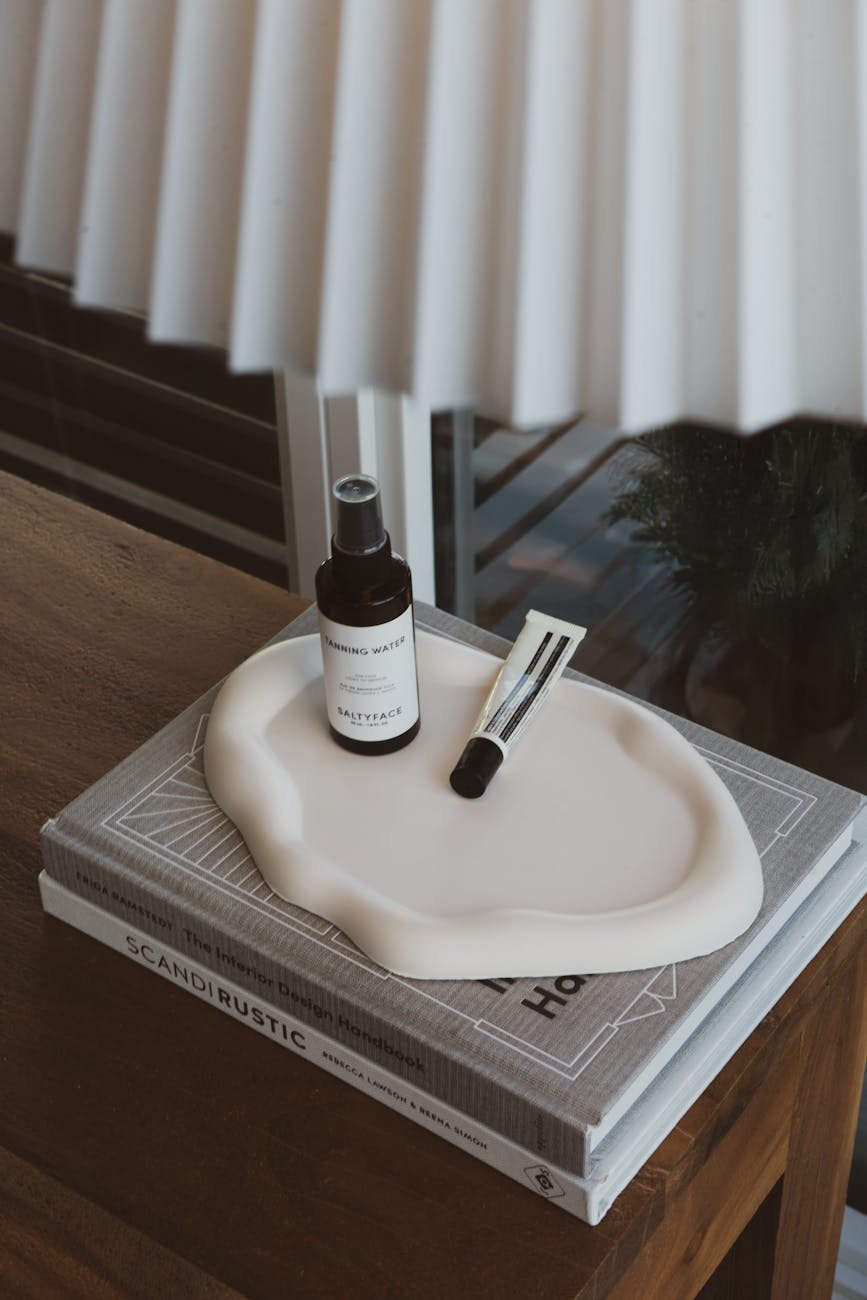The Sound of Sustainability: Patrick Cronin’s TTD.3000 Speaker Redefines Audio Longevity
Beyond the Disposable: How a 3D-Printed, Repairable Speaker is Championing a New Era of Consumer Electronics
In an era where electronic obsolescence often feels inevitable, a new wave of innovation is emerging, challenging the status quo of disposable technology. At the forefront of this movement is the TTD.3000, a 3D-printed speaker designed by Patrick Cronin. More than just an audio device, the TTD.3000 represents a significant step towards a more circular economy for consumer electronics, emphasizing repairability and longevity. This article delves into the design philosophy behind the TTD.3000, its potential impact on the market, and the broader implications for how we consume and interact with technology.
Introduction
The modern consumer is increasingly aware of the environmental and economic toll of disposable technology. From smartphones that become outdated within a few years to headphones that are often cheaper to replace than to fix, the cycle of consumption and waste is a growing concern. The Maker Hardware TTD.3000 speaker, conceived by designer Patrick Cronin, directly addresses this issue by embedding repairability into its very core. This speaker isn’t just about producing sound; it’s about fostering a different relationship with our devices, one that values longevity, user agency, and a reduced environmental footprint.
Context & Background
The trend towards shorter product lifecycles in consumer electronics is a complex issue with multifaceted drivers. Economic factors, such as the cost of components and manufacturing, often lead companies to design products that are difficult or impossible to repair, thereby encouraging consumers to purchase newer models. This practice, often termed “planned obsolescence,” has been a subject of criticism and debate for decades. The Right to Repair movement has gained significant traction globally, advocating for legislation that would grant consumers and independent repair shops greater access to parts, tools, and repair information. This movement highlights the desire for consumers to extend the life of their products, save money, and reduce electronic waste.
Within this broader context, the rise of 3D printing (also known as additive manufacturing) has opened up new possibilities for product design and manufacturing. 3D printing allows for greater customization, on-demand production, and the creation of intricate geometries that are difficult or impossible with traditional manufacturing methods. Crucially, it can also facilitate the design of products that are inherently easier to disassemble and repair. By utilizing 3D printing, designers can move away from integrated circuits and glued components, opting instead for modular designs where individual parts can be easily accessed, replaced, or upgraded.
Patrick Cronin’s TTD.3000 emerges from this confluence of a growing demand for sustainable and repairable products and the innovative capabilities of 3D printing. While specific details about Cronin’s design process and the exact materials used are not extensively detailed in the initial report, the core concept of a repairable, 3D-printed speaker positions it as a compelling example of forward-thinking product design.
In-Depth Analysis
The TTD.3000’s design philosophy centers on “circularity,” a concept that seeks to keep resources in use for as long as possible, extracting the maximum value from them whilst in use, then recovering and regenerating products and materials at the end of each service life. For consumer electronics, this translates to designing products that are:
- Durable: Built to withstand regular use.
- Repairable: Easy for consumers or technicians to fix.
- Upgradable: Capable of receiving component improvements.
- Recyclable: Materials can be reprocessed at end-of-life.
The TTD.3000 specifically targets the “repairable” and potentially “upgradable” aspects. By being 3D-printed, the speaker’s casing and internal structures can be designed with modularity in mind. This could mean:
- Snap-fit components: Rather than relying on permanent adhesives, parts are designed to be snapped together and unsnapped with minimal tools.
- Standardized fasteners: The use of common screws or bolts that are readily available.
- Accessible internal components: Circuit boards, drivers, and wiring are positioned so they can be reached without extensive disassembly.
- Modular upgrades: The possibility of replacing an older audio driver with a newer, better-performing one, or upgrading the internal amplifier.
The choice of 3D printing also offers significant advantages in terms of customization and material selection. Designers can optimize the internal geometry of the speaker enclosure to enhance acoustic performance, potentially creating unique sound profiles tailored to specific preferences. Furthermore, advancements in 3D printing materials mean that durable and acoustically suitable materials can be employed, addressing potential concerns about the longevity or sound quality of 3D-printed components.
From a consumer perspective, a repairable speaker translates to tangible benefits. It means that if a component fails – perhaps a blown driver or a damaged port – the consumer can potentially source a replacement part and repair the speaker themselves or take it to a local repair shop. This not only saves money compared to purchasing a new speaker but also fosters a sense of ownership and empowers consumers to take control of their technology.
The economic implications for manufacturers are also noteworthy. While initial setup for 3D printing might differ from mass-production techniques, it offers flexibility and can reduce the reliance on complex supply chains for specific, often proprietary, components. For a product like the TTD.3000, which appears to be positioned within the “maker” or enthusiast hardware space, 3D printing is an ideal manufacturing method that aligns with the ethos of customization and DIY repair.
The environmental impact is perhaps the most compelling argument for this approach. Electronic waste (e-waste) is a rapidly growing global problem, with vast quantities of discarded electronics ending up in landfills, often leaching toxic materials into the environment. By extending the lifespan of products through repair and upgradeability, the TTD.3000 actively contributes to reducing this waste stream. Moreover, if the 3D printing materials themselves are chosen with sustainability in mind – such as recycled plastics or biodegradable filaments – the product’s environmental credentials are even stronger.
Pros and Cons
Pros:
- Enhanced Longevity: The core design principle of repairability directly combats planned obsolescence, allowing the product to last significantly longer.
- Reduced E-Waste: By making components replaceable, the TTD.3000 contributes to a circular economy and minimizes the amount of electronic waste generated.
- Cost Savings for Consumers: Repairing a speaker is typically much cheaper than buying a new one, offering long-term financial benefits.
- User Empowerment: Repairability gives consumers more control over their devices, fostering a sense of agency and encouraging hands-on engagement with technology.
- Customization and Modularity: 3D printing allows for unique acoustic designs and the potential for component upgrades, catering to enthusiast preferences.
- Sustainable Manufacturing Potential: If sustainable 3D printing materials are used, the product’s environmental footprint can be further reduced.
- Supports the Right to Repair Movement: Aligns with and champions the growing global movement for accessible electronics repair.
Cons:
- Potential for Higher Initial Cost: While not explicitly stated, specialized design for repairability and the use of 3D printing might lead to a higher upfront cost compared to mass-produced, less repairable speakers.
- Perceived Audio Quality: Some consumers might have reservations about the sound quality of 3D-printed components, despite advancements in materials and design.
- Availability of Replacement Parts: The success of the repairability model hinges on the consistent availability of specific replacement parts, which could be a challenge if not managed effectively by the designer or manufacturer.
- Technical Skill Requirement: While designed for repairability, some repairs might still require a basic understanding of electronics and a certain level of technical aptitude from the consumer.
- Scalability of 3D Printing: While 3D printing is excellent for customization and smaller runs, scaling up to mass-market production might present logistical and cost challenges compared to traditional injection molding.
- Durability of 3D-Printed Materials: Depending on the specific materials used, the long-term durability of certain 3D-printed components might be a concern for some users.
Key Takeaways
- The TTD.3000 speaker, designed by Patrick Cronin, champions a circular economy approach to consumer electronics.
- Its core feature is repairability, designed to extend the product’s lifespan and reduce electronic waste.
- 3D printing is utilized as the manufacturing method, enabling modular design and potential customization.
- This design directly supports the “Right to Repair” movement, empowering consumers to fix their devices.
- While offering significant sustainability and cost-saving benefits, potential challenges include initial cost, parts availability, and the need for some technical skill for repairs.
Future Outlook
The TTD.3000, by focusing on repairability and longevity, is not just a single product but a paradigm shift in how consumer electronics can be conceived and manufactured. Its success could pave the way for other companies to adopt similar design principles. As the Right to Repair movement gains more legislative victories, the market may increasingly favor products that are designed with user maintenance and longevity in mind.
The advancements in 3D printing technology will continue to play a crucial role. As printing speeds increase, material options expand (including more sustainable and durable composites), and the cost of desktop 3D printers decreases, more designers and smaller manufacturers will be empowered to create products with repairability at their heart. This could democratize product design and foster a more resilient and less wasteful consumer electronics ecosystem.
Furthermore, as consumer awareness of environmental issues grows, there will be increasing demand for products that align with sustainable values. Brands that can authentically offer repairable, upgradeable, and responsibly manufactured goods are likely to gain a competitive advantage. The TTD.3000 is an early indicator of this trend, suggesting a future where the “throwaway” culture of electronics is replaced by a more mindful, sustainable, and user-centric approach.
We may also see the emergence of service models that support these repairable products, such as dedicated repair hubs or online platforms where consumers can easily access spare parts and repair guides. This ecosystem support will be vital for the widespread adoption of repairable consumer goods.
Call to Action
The innovation represented by the TTD.3000 speaker highlights a critical juncture in consumer electronics. Consumers can actively support this shift by:
- Educating themselves: Learn more about the Right to Repair movement and its importance for sustainability and consumer rights. Resources like iFixit’s Right to Repair section offer extensive information.
- Supporting brands with repairable products: When purchasing new electronics, actively seek out products that are designed for longevity and repairability. Look for companies that provide spare parts, repair manuals, and clear warranty information that doesn’t void due to minor repairs.
- Advocating for policy change: Support legislative efforts that mandate manufacturers to make products repairable and provide access to necessary parts and information. Contact your local representatives to voice your support for Right to Repair legislation.
- Exploring DIY repair: For existing electronics, consider attempting minor repairs yourself. Resources like YouTube tutorials and repair forums can be invaluable. This not only saves money but also builds understanding and confidence in maintaining your devices.
- Considering 3D printing for solutions: For those with access to 3D printers, consider exploring designs for repair parts or even entire devices that prioritize sustainability and repairability. The Thingiverse community, for instance, is a hub for shared 3D printable designs.
By embracing and demanding products like the TTD.3000, consumers can collectively drive the market towards a more sustainable and responsible future for technology.









